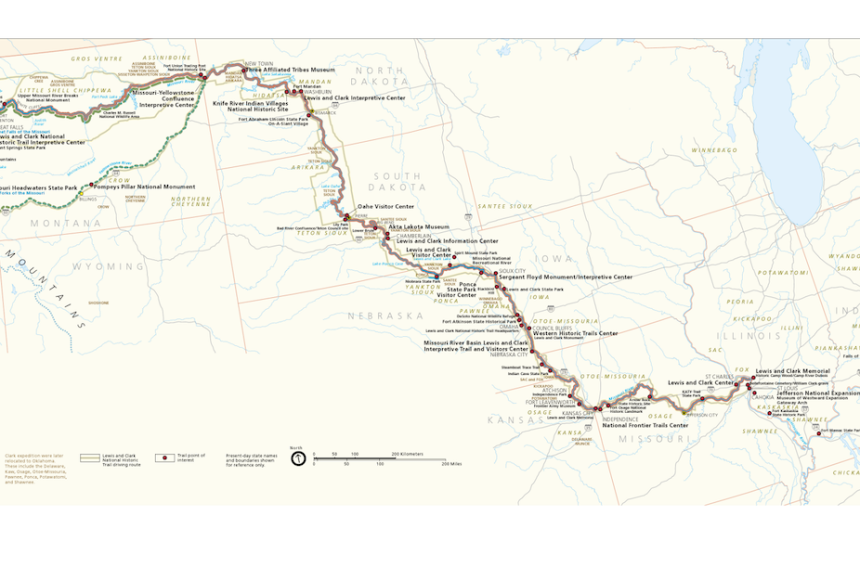ENCYCLOPEDIC ENTRY
ENCYCLOPEDIC ENTRY
Lewis and Clark Trail
Lewis and Clark Trail
In 1804, Meriwether Lewis and William Clark set out on a two-year journey to document the newly purchased Louisiana Territory. On the way to the Pacific, they collected information on plants, animals, and about some of the Native American nations living in the area.
Grades
9 - 12
Image
Lewis and Clark Trail Map
Meriwether Lewis and William Clark led an expedition to survey the newly purchased territory acquired from the French, known as the Louisiana Purchase. The trek sent the party of about 40 from St. Louis to the Pacific Ocean.
Image by the United States National Park Service

Media Credits
The audio, illustrations, photos, and videos are credited beneath the media asset, except for promotional images, which generally link to another page that contains the media credit. The Rights Holder for media is the person or group credited.
Director
Author
Production Managers
Program Specialists
Producer
Intern
other
Last Updated
October 19, 2023
For information on user permissions, please read our Terms of Service. If you have questions about how to cite anything on our website in your project or classroom presentation, please contact your teacher. They will best know the preferred format. When you reach out to them, you will need the page title, URL, and the date you accessed the resource.
Media
If a media asset is downloadable, a download button appears in the corner of the media viewer. If no button appears, you cannot download or save the media.
Text
Text on this page is printable and can be used according to our Terms of Service.
Interactives
Any interactives on this page can only be played while you are visiting our website. You cannot download interactives.